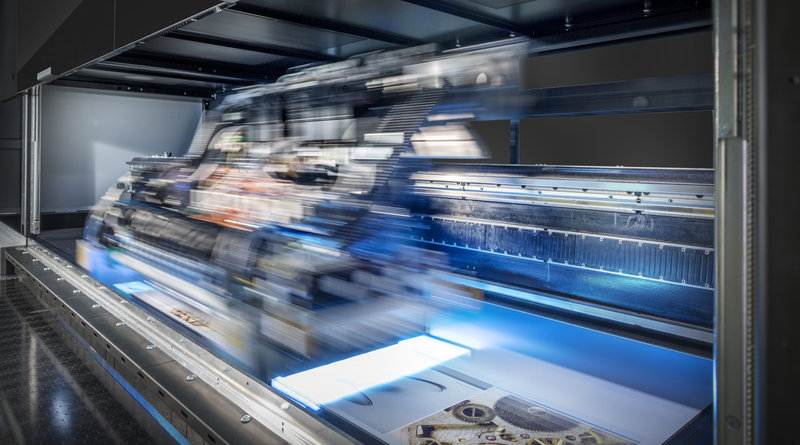High Technology Printing: Revolutionizing Industries
High technology printing is transforming the way we create and manufacture products. From 3D printing to advanced digital techniques, these technologies are pushing the boundaries of what’s possible, offering unprecedented […]

High technology printing is transforming the way we create and manufacture products. From 3D printing to advanced digital techniques, these technologies are pushing the boundaries of what’s possible, offering unprecedented levels of customization, efficiency, and sustainability. The evolution of printing technology has been a fascinating journey, marked by leaps in innovation that have enabled us to create increasingly complex and sophisticated objects.
The emergence of high-technology printing has been driven by several key factors. The growing demand for personalized products, coupled with the need for faster and more efficient manufacturing processes, has fueled the development and adoption of these advanced techniques. Furthermore, the increasing focus on sustainability has spurred innovation in materials and processes, leading to more environmentally friendly printing solutions.
Types of High Technology Printing

High-technology printing encompasses a range of advanced printing methods that have revolutionized the printing industry, enabling the production of high-quality, customized, and innovative printed materials. These technologies have significantly expanded the possibilities of printing, allowing for greater precision, versatility, and efficiency.
Types of High Technology Printing
High-technology printing methods can be categorized based on their core technologies and applications. Here is a breakdown of the major types, including their descriptions, applications, advantages, and limitations:
| Type | Description | Applications | Advantages/Limitations |
|---|---|---|---|
| 3D Printing (Additive Manufacturing) | 3D printing, also known as additive manufacturing, builds three-dimensional objects layer by layer from a digital design. The process involves depositing materials, such as plastics, metals, ceramics, or composites, in a controlled manner to create the desired shape. | Prototyping, manufacturing, medical implants, construction, aerospace, automotive, and consumer products. | Advantages:
Limitations:
|
| Digital Printing (Inkjet, Laser, etc.) | Digital printing involves directly transferring images or text from a digital file onto a printing surface using a digital imaging process. Common methods include inkjet printing, laser printing, and electrophotography. | Personalized marketing materials, promotional items, business cards, brochures, posters, and short-run publications. | Advantages:
Limitations:
|
| Large Format Printing | Large format printing focuses on producing high-resolution prints on large surfaces, such as banners, posters, billboards, and signage. Common methods include inkjet printing, solvent printing, and UV printing. | Outdoor advertising, trade shows, exhibitions, architectural visualizations, and interior design. | Advantages:
Limitations:
|
| Offset Printing with Advanced Features | Offset printing is a traditional printing method that uses an inked plate to transfer images onto a rubber blanket and then onto the printing surface. Advanced features include variable data printing, inline finishing, and digital pre-press workflows. | Books, magazines, brochures, packaging, and high-volume marketing materials. | Advantages:
Limitations: |
| Flexographic Printing with High-Resolution Capabilities | Flexographic printing uses a flexible printing plate made of photopolymer to transfer ink onto a substrate. High-resolution flexographic printing utilizes advanced technologies, such as digital platemaking and high-resolution screens, to achieve sharper details and finer lines. | Packaging, labels, flexible films, and corrugated cardboard. | Advantages:
Limitations: |
Future Trends in High Technology Printing

The field of high-technology printing is constantly evolving, driven by advancements in technology and the growing demand for innovative solutions across various industries. Emerging trends are shaping the future of printing, promising significant advancements and new applications.
Integration with Artificial Intelligence (AI) and Machine Learning
AI and machine learning are playing a transformative role in high-technology printing. These technologies enable intelligent printing systems that can optimize print quality, reduce waste, and automate complex processes.
- Automated Quality Control: AI-powered systems can analyze print data in real-time to identify defects and inconsistencies, allowing for automated adjustments to ensure optimal print quality.
- Predictive Maintenance: Machine learning algorithms can analyze sensor data from printing equipment to predict potential failures, enabling proactive maintenance and minimizing downtime.
- Personalized Printing: AI can be used to create customized printing solutions based on individual preferences, allowing for personalized products and experiences.
Development of New Materials and Printing Processes, High technology printing
The development of new materials and printing processes is expanding the possibilities of high-technology printing.
- 3D Printing with Advanced Materials: The use of advanced materials, such as composites, ceramics, and metals, in 3D printing is enabling the creation of complex and functional objects with enhanced properties.
- Bioprinting: Bioprinting uses specialized inks and printing processes to create living tissues and organs, with potential applications in medicine, tissue engineering, and drug discovery.
- 4D Printing: 4D printing involves the creation of objects that can change shape or form in response to external stimuli, such as temperature or light. This technology opens up new possibilities for responsive and adaptive products.
Increased Focus on Sustainability and Circular Economy Principles
Sustainability and circular economy principles are becoming increasingly important in the printing industry.
- Bio-based Inks and Materials: The use of bio-based inks and materials derived from renewable resources reduces the environmental impact of printing.
- Waste Reduction and Recycling: Innovations in printing processes and material design are leading to reduced waste and improved recycling capabilities.
- Closed-Loop Systems: The development of closed-loop systems that reuse and recycle printing materials promotes a circular economy approach.
Expansion into New Application Areas
High-technology printing is expanding into new application areas, driving innovation across various industries.
- Personalized Medicine: 3D printing is revolutionizing personalized medicine, enabling the creation of custom-designed implants, prosthetics, and drug delivery systems.
- Aerospace and Automotive: High-technology printing is used to create lightweight and durable components for aerospace and automotive applications, improving performance and reducing weight.
- Consumer Products: Printing technologies are being used to create customized and personalized consumer products, from clothing and footwear to electronics and home goods.
Ending Remarks

High technology printing is poised to play a pivotal role in shaping the future of various industries. As these technologies continue to evolve and become more accessible, we can expect to see even more innovative applications emerge, transforming the way we design, manufacture, and interact with the world around us. The integration of artificial intelligence and the development of new materials and printing processes will further enhance the capabilities of high-technology printing, pushing the boundaries of what’s possible and opening up a world of exciting possibilities.
High technology printing has revolutionized many industries, from personalized medicine to high-end fashion. The same spirit of innovation is evident in the field of healthcare, with advancements like new chiropractic technology improving patient care and treatment outcomes. These technologies, like 3D printing for customized orthotics, showcase the powerful intersection of high technology and healthcare, paving the way for a future of more precise and personalized medical solutions.







